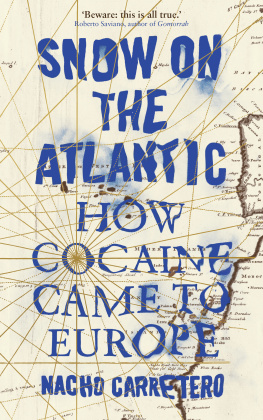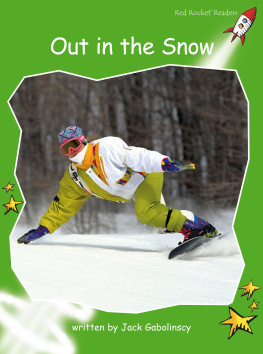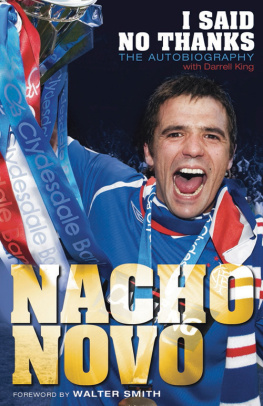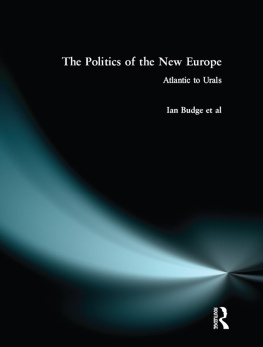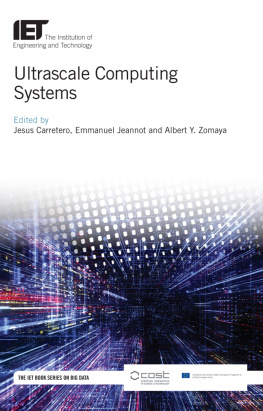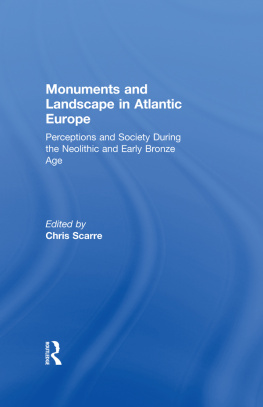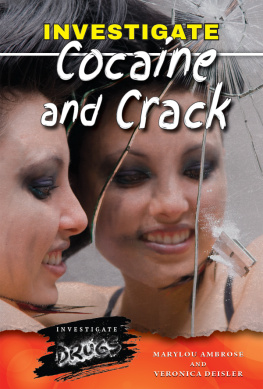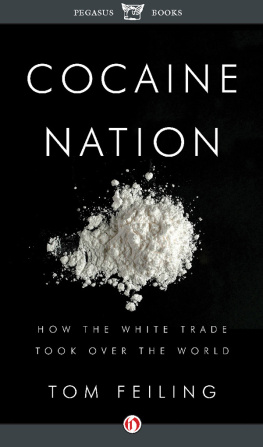Nacho Carretero - Snow on the Atlantic : how cocaine came to Europe
Here you can read online Nacho Carretero - Snow on the Atlantic : how cocaine came to Europe full text of the book (entire story) in english for free. Download pdf and epub, get meaning, cover and reviews about this ebook. year: 2018, genre: Detective and thriller. Description of the work, (preface) as well as reviews are available. Best literature library LitArk.com created for fans of good reading and offers a wide selection of genres:
Romance novel
Science fiction
Adventure
Detective
Science
History
Home and family
Prose
Art
Politics
Computer
Non-fiction
Religion
Business
Children
Humor
Choose a favorite category and find really read worthwhile books. Enjoy immersion in the world of imagination, feel the emotions of the characters or learn something new for yourself, make an fascinating discovery.
- Book:Snow on the Atlantic : how cocaine came to Europe
- Author:
- Genre:
- Year:2018
- Rating:3 / 5
- Favourites:Add to favourites
- Your mark:
- 60
- 1
- 2
- 3
- 4
- 5
Snow on the Atlantic : how cocaine came to Europe: summary, description and annotation
We offer to read an annotation, description, summary or preface (depends on what the author of the book "Snow on the Atlantic : how cocaine came to Europe" wrote himself). If you haven't found the necessary information about the book — write in the comments, we will try to find it.
Snow on the Atlantic : how cocaine came to Europe — read online for free the complete book (whole text) full work
Below is the text of the book, divided by pages. System saving the place of the last page read, allows you to conveniently read the book "Snow on the Atlantic : how cocaine came to Europe" online for free, without having to search again every time where you left off. Put a bookmark, and you can go to the page where you finished reading at any time.
Font size:
Interval:
Bookmark:

ABOUT THE AUTHOR AND TRANSLATOR
Nacho Carretero is an investigative journalist with the Spanish newspaper El Espaol . His reporting has taken him to countries ranging from the Philippines to Rwanda, and he has previously written for El Pas , El Mundo and many other publications. The original Spanish edition of Snow on the Atlantic has become a bestseller in Spain, as well as a popular TV series on Antena 3.
Thomas Bunstead is a writer and translator based in East Sussex, England. He has translated some of the leading Spanish-language writers working today, including Agustn Fernndez Mallo, Enrique Vila-Matas and Juan Villoro, and his own writing has appeared in publications such as >kill author , Paris Review Daily , and The TLS . He is an editor at the literary translation journal In Other Words . @thom_bunn
SNOW ON THE ATLANTIC
HOW COCAINE CAME TO EUROPE
NACHO CARRETERO
TRANSLATED BY THOMAS BUNSTEAD

Snow on the Atlantic was first published in English in 2018 by Zed Books Ltd, The Foundry, 17 Oval Way, London SE11 5RR, UK.
www.zedbooks.net
Copyright Nacho Carretero 2015 for the text.
Originally published in Spanish by Libros del K.O. in 2015.
This translation is published with arrangement of Oh!Books Agencia Literaria.
English language translation Thomas Bunstead 2018.
The right of Nacho Carretero to be identified as the author of this work has been asserted by him in accordance with the Copyright, Designs and Patents Act 1988.
Typeset in Haarlemmer and Trade Gothic
by Swales & Willis Ltd, Exeter, Devon
Cover design by Steve Leard
Cover photo Tetra Images/Getty
All rights reserved. No part of this publication may be reproduced, stored in a retrieval system or transmitted in any form or by any means, electronic, mechanical, photocopying or otherwise, without the prior permission of Zed Books Ltd.
A catalogue record for this book is available from the British Library
ISBN 978178699302 1 pb
ISBN 9781786993038 pdf
ISBN 9781786993045 epub
ISBN 978 78699 2 mobi
For Antn: welcome.
For Paloma: thank you.
CONTENTS
Make a record of it all. Some day, some bastard is going to stand up and say none of this ever happened.
Dwight D. Eisenhower, after the liberation of Auschwitz
Old people in a raia still tell the tale.
There was an old man who crossed the border between Galicia in Spain and Portugal every day on his bicycle, always with a bag over his shoulder. Each time, the border guards would stop him and ask what was in the bag. Ever accommodating, the man opened it and let them look for themselves. Just coal, he would chirp. The border guards, though irritated, let him through. On the other side, the same scene: the Portuguese border guards (known locally as guardinhas ) would search the bag before allowing him to cycle on. A scene that played out again and again over the years, to the continued annoyance of the border guards; every time he came along, not only would they not find any contraband, it meant getting coal dust all over their uniforms. Like the Edgar Allan Poe short story in which police ransack a house for a letter that was in front of them the moment they walked through the door, the secret of this raia man was in plain sight all along.
He was a bicycle smuggler.
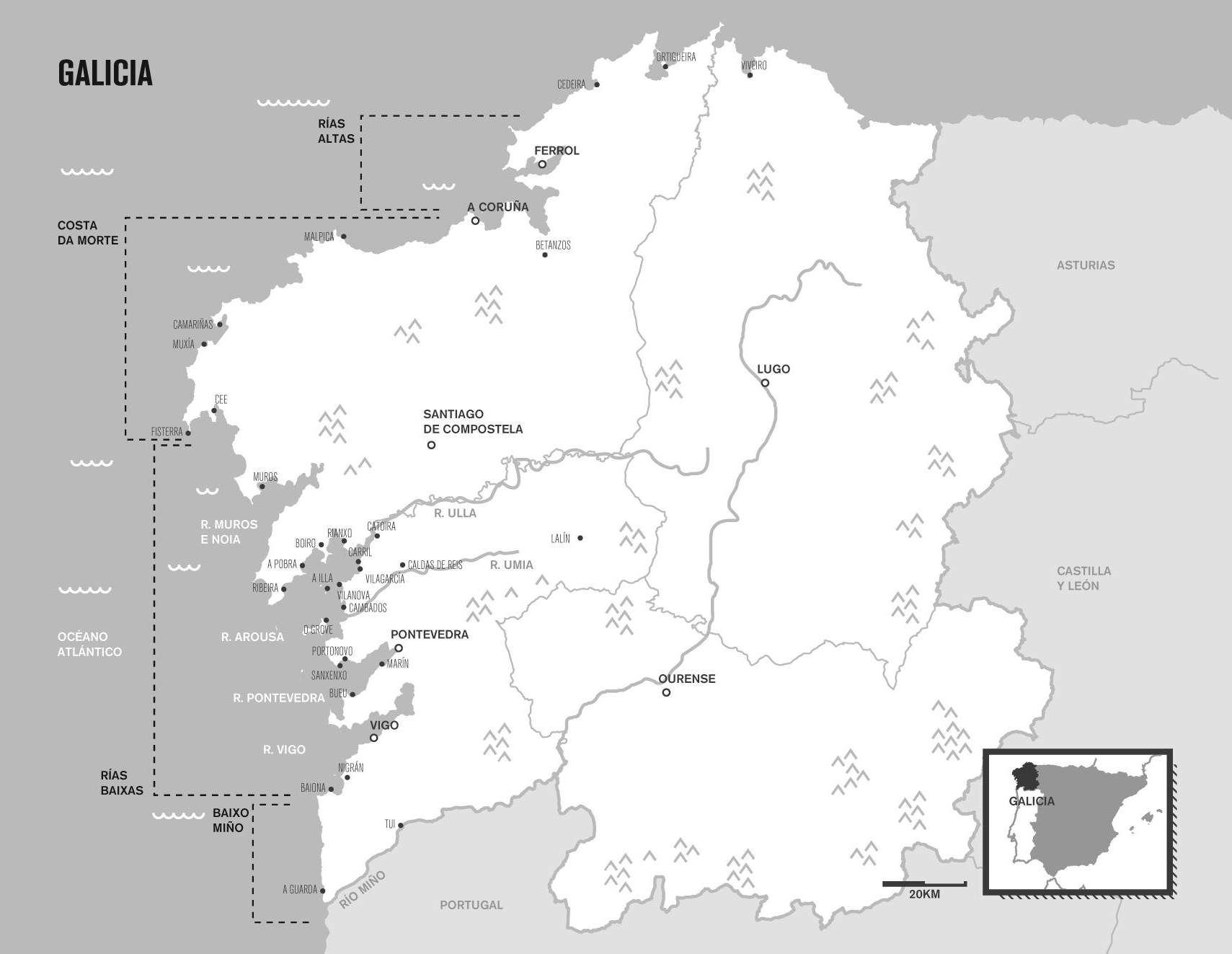
From the Romans to the Prestige oil spill: everything sinks off this coast.
It seemed hard to believe when we did the measurements at school: Galicia has 930 miles of coast. More than Andalusia, more than all of the Balearic Islands put together. Zoom in and the shoreline reveals an aversion to straight lines; it comprises an uncompromising welter of recesses and tiny bays, ideal for entering and leaving unseen. The succession of shelves and rocks that skirt it could almost have been designed for ships to run aground on. One of its stretches is called Costa da Morte the Coast of Death. And it is on the Costa da Morte that this story begins.
There was a time when the only interaction between the villages and towns in the area most of them nestled away, sheltered from the scouring Atlantic winds took the form of rivalries between the fishermens guilds. The remoteness of Galicia brought about a unique accent that other Spaniards often struggle to understand. The jewel in the crown is Cape Finisterre the end of the world as far as the Romans were concerned; to the Greeks the point from which Charon the ferryman set off across the Styx; and the place where the Christian Camino de Santiago begins. For most visitors today, it is simply a charming promontory jutting into the ocean. And, it just so happens, a nice steep headland for bringing in contraband.
The people of Costa da Morte, which runs roughly from the city of Corua to a little way past Finisterre, have always depended on the sea for their livelihood. On fishing and on trade, but also on passing merchant vessels; they would not always wait to get their hands on the cargo at the principal ports of Corme, Laxe, Muxa or Camarias, often choosing to go out raiding instead. Or they could just keep an eye out for any wreckage that might wash ashore.
Any attempt to count the ships that have sunk off Galicia is itself destined to flounder. There have been 927 documented cases since the Middle Ages If only, locals say to that. A researcher named Rafael Lema has written a meticulous compilation of these stories entitled Costa da Morte, un pas de sueos y naufragios (Coast of Death: Country of Dreams and Shipwrecks), which summarises some of the most surprising incidents.
At the end of the nineteenth century, the English merchant vessel Chamois ran aground near Laxe. According to local fable, a fisherman went to the aid of the crew, calling out when he drew close to see if the captain wanted assistance. The captain, thinking he was being asked the ships name, answered Chamois , and a wondrous linguistic short circuit resulted: the fisherman understood him to be saying that the ships cargo was cattle ( bois in Galician) and hurried back to land to tell his compatriots. In no time at all they had sailed out in their hundreds, armed to the teeth to the horror of the bedraggled Englishmen.
Around the same time there was the Priam : when it ran aground, the gold and silver watches that spilled onto the beach were gone within a matter of hours. A grand piano also washed up, and the locals, mistaking it for another chest, hacked it to pieces. They had never laid eyes on such a thing before.
The popular story of the Compostelano does not strictly concern a shipwreck. She manoeuvred expertly to enter the River Laxe and, coming to landfall, ran into a sandbank off Cabana beach. When the locals went down to take a look, they are said to have found a cat on board, but no sign of any crew.
One of the worst tragedies took place in 1890, when the English vessel Serpent went down off Camarias and its crew of 500 perished. Their graves can be found in the nearby English Cemetery, positioned scenically between beach and cliff. Twenty years earlier the Captain had sunk off Finisterre, and no fewer than 400 men lost their lives.
The horror of shipwrecks did not always take the shape of drowned men. In 1905, the Palermo , its hold full of accordions, sunk near Muxa. The onshore breeze was said to carry chilling, ghostly strains that night.
Font size:
Interval:
Bookmark:
Similar books «Snow on the Atlantic : how cocaine came to Europe»
Look at similar books to Snow on the Atlantic : how cocaine came to Europe. We have selected literature similar in name and meaning in the hope of providing readers with more options to find new, interesting, not yet read works.
Discussion, reviews of the book Snow on the Atlantic : how cocaine came to Europe and just readers' own opinions. Leave your comments, write what you think about the work, its meaning or the main characters. Specify what exactly you liked and what you didn't like, and why you think so.

